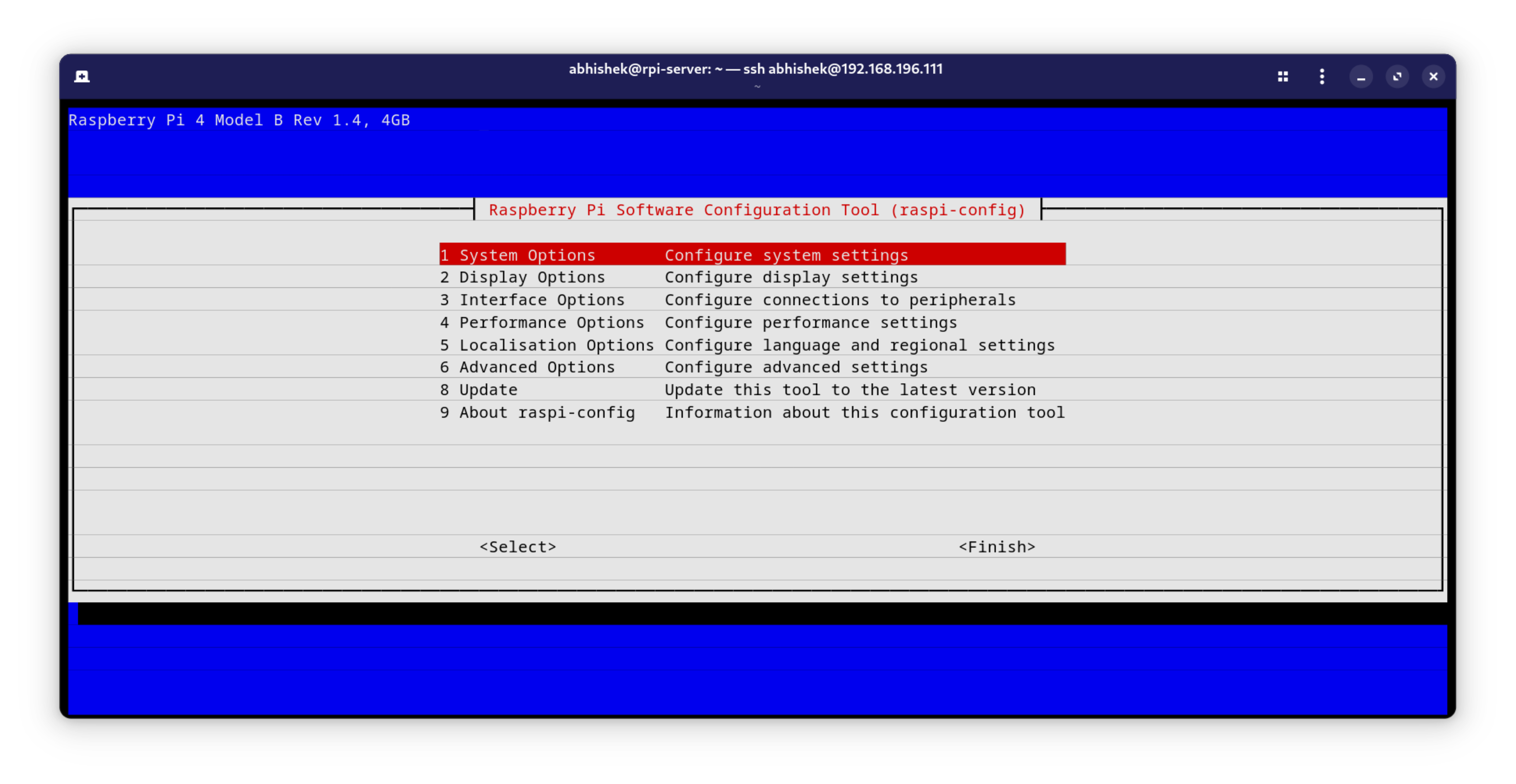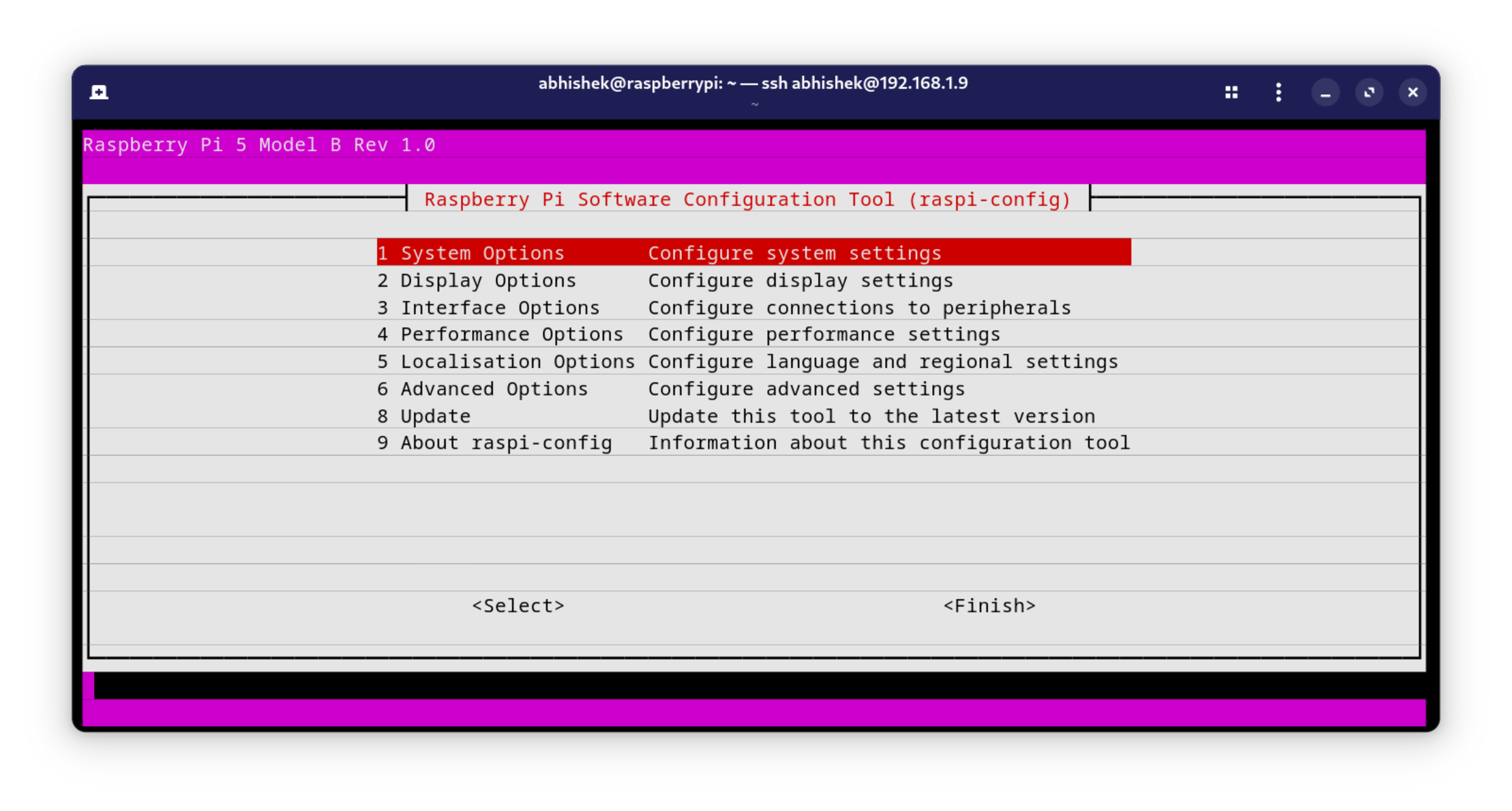Mastering Raspi Remote: Your Ultimate Guide To Control Everything With Raspberry Pi
Imagine having the power to control every gadget in your home with just a few lines of code on a tiny device called Raspberry Pi. That’s right, folks! With raspi remote, you’re not just automating; you’re revolutionizing how you interact with technology. Whether it’s turning on your lights, streaming your favorite shows, or even unlocking your garage door, Raspberry Pi remote capabilities open up endless possibilities. Let’s dive into this tech-savvy world and uncover the secrets behind raspi remote.
Raspberry Pi has been a game-changer for hobbyists, developers, and tech enthusiasts alike. But did you know that its remote control functionalities can turn your humble Pi into a powerhouse of automation? Yes, you can now harness the power of raspi remote to simplify your life. From home automation to IoT projects, the possibilities are as vast as your imagination.
In this guide, we’ll explore everything you need to know about setting up, configuring, and utilizing raspi remote like a pro. Whether you’re a beginner or an advanced user, this article will equip you with the knowledge and tools to take your Raspberry Pi projects to the next level. So, buckle up and get ready to unlock the full potential of raspi remote!
- Aditi Mystery Sex Videos Unveiling The Truth Behind The Controversy
- Aditi Mistry Hot New Video The Latest Buzz Around The Internet
Table of Contents
- What is Raspi Remote?
- Raspberry Pi Basics
- Setting Up Raspi Remote
- Common Use Cases for Raspi Remote
- Remote Control Protocols
- Software for Raspi Remote
- Hardware Requirements
- Troubleshooting Tips
- Security Considerations
- The Future of Raspi Remote
What is Raspi Remote?
So, what exactly is raspi remote, and why should you care? In simple terms, raspi remote refers to the ability to control devices and systems remotely using a Raspberry Pi. This little wonder board can act as a bridge between your devices and the internet, allowing you to manage everything from a distance. It’s like having a personal assistant that handles all your tech-related tasks without breaking a sweat.
Why Use Raspi Remote?
Here’s the thing: automation is the future, and Raspberry Pi is your gateway to that future. With raspi remote, you can:
- Control smart home devices without expensive hubs.
- Stream media to multiple devices simultaneously.
- Monitor and manage IoT projects effortlessly.
- Build custom remote control systems tailored to your needs.
Think of it as a DIY solution that saves you money while giving you complete control over your setup. Who wouldn’t want that, right?
- Penelope Menchaca The Rising Star Redefining Entertainment
- Vince Mcmahon Latest News 2025 The Wrestling Titans New Adventures
Raspberry Pi Basics
Before we dive deeper into raspi remote, let’s take a moment to understand what makes Raspberry Pi so special. Launched back in 2012, Raspberry Pi is a credit-card-sized computer designed to promote learning and experimentation in technology. It’s affordable, versatile, and packed with features that make it perfect for both beginners and experts.
Key Features of Raspberry Pi
Here are some standout features that make Raspberry Pi ideal for remote control applications:
- Multiple GPIO pins for interfacing with external devices.
- Built-in Wi-Fi and Bluetooth capabilities for wireless communication.
- Support for a wide range of operating systems, including Linux-based distributions.
- Extensive community support and tons of tutorials to help you get started.
With these features, Raspberry Pi becomes a powerful tool for building remote control systems that cater to your specific needs.
Setting Up Raspi Remote
Now that you understand the basics, let’s talk about setting up raspi remote. Don’t worry; it’s not as complicated as it sounds. With a few steps and some patience, you’ll have your Raspberry Pi up and running in no time.
Step 1: Install the Right Software
The first step is to install an operating system on your Raspberry Pi. For remote control purposes, we recommend using Raspbian or Ubuntu Server. Both are lightweight and come with the necessary tools to get you started.
Step 2: Configure Wi-Fi
Once your OS is installed, make sure your Raspberry Pi is connected to your Wi-Fi network. This is crucial for remote access. You can do this by editing the wpa_supplicant.conf file or using the GUI if you’re running a desktop environment.
Step 3: Enable SSH
SSH (Secure Shell) allows you to access your Raspberry Pi remotely from another device. To enable SSH, simply create an empty file named ssh in the boot directory of your SD card. That’s it! Your Pi is now ready for remote connections.
Common Use Cases for Raspi Remote
Now that your Raspberry Pi is set up, let’s explore some common use cases for raspi remote. The possibilities are endless, but here are a few ideas to get you started:
Smart Home Automation
Use your Raspberry Pi to control smart home devices like lights, thermostats, and security cameras. With raspi remote, you can create custom automation routines that make your life easier and more comfortable.
Media Streaming
Turn your Raspberry Pi into a media center that streams your favorite movies, music, and TV shows. Combine it with a remote control app, and you’ve got yourself a personal entertainment hub.
IoT Projects
Raspberry Pi is perfect for building IoT projects that require remote monitoring and control. Whether it’s a weather station, a plant watering system, or a smart fridge, raspi remote can handle it all.
Remote Control Protocols
When it comes to raspi remote, understanding the protocols involved is essential. These protocols dictate how your Raspberry Pi communicates with other devices. Here are a few popular ones:
HTTP/HTTPS
This is the most common protocol for web-based remote control. It allows you to access your Raspberry Pi through a browser, making it easy to manage from anywhere in the world.
MQTT
MQTT (Message Queuing Telemetry Transport) is a lightweight protocol ideal for IoT applications. It’s perfect for sending small messages between devices, making it a great choice for raspi remote projects.
SSH
As mentioned earlier, SSH is a secure way to access your Raspberry Pi remotely. It’s especially useful for managing your Pi from a terminal or command-line interface.
Software for Raspi Remote
Choosing the right software is key to making the most out of raspi remote. Here are some popular options:
Home Assistant
Home Assistant is an open-source home automation platform that works seamlessly with Raspberry Pi. It allows you to control all your smart home devices from a single interface, making it a must-have for raspi remote enthusiasts.
OpenHAB
OpenHAB is another popular choice for home automation. It’s highly customizable and supports a wide range of protocols, making it a versatile option for raspi remote projects.
Node-RED
Node-RED is a visual programming tool that simplifies the process of wiring together hardware devices, APIs, and online services. It’s perfect for creating complex automation routines with raspi remote.
Hardware Requirements
While Raspberry Pi is the star of the show, you’ll need a few additional components to make raspi remote work effectively. Here’s a list of hardware essentials:
- Raspberry Pi board (any model will do).
- MicroSD card with pre-installed operating system.
- Power supply (5V USB adapter).
- Wi-Fi dongle (if your Pi doesn’t have built-in Wi-Fi).
- USB keyboard and mouse (optional).
With these components, you’re all set to start building your raspi remote projects.
Troubleshooting Tips
Even the best-laid plans can go awry sometimes. If you encounter issues with raspi remote, here are a few troubleshooting tips to help you out:
- Check your Wi-Fi connection and ensure your Pi is connected to the correct network.
- Verify that SSH is enabled and properly configured.
- Make sure your software is up to date and compatible with your Raspberry Pi model.
- Consult the official Raspberry Pi forums or community for additional support.
Remember, patience is key when dealing with tech issues. Take a deep breath, troubleshoot step by step, and you’ll be back on track in no time.
Security Considerations
Security is a critical aspect of raspi remote. Since your Raspberry Pi will be accessible over the internet, it’s important to take the necessary precautions to protect your system. Here are a few tips:
- Use strong passwords and enable two-factor authentication whenever possible.
- Regularly update your operating system and software to patch any security vulnerabilities.
- Limit access to your Raspberry Pi by using firewalls and IP whitelisting.
By following these best practices, you can ensure that your raspi remote setup remains secure and protected from unauthorized access.
The Future of Raspi Remote
The world of raspi remote is evolving rapidly, and the future looks bright. As more devices become connected and the demand for automation grows, Raspberry Pi will continue to play a vital role in shaping this landscape. With advancements in AI, machine learning, and edge computing, the possibilities for raspi remote are only limited by our imagination.
So, whether you’re a tech enthusiast, a DIY hobbyist, or a professional developer, there’s never been a better time to explore the world of raspi remote. The power is in your hands, and the only limit is your creativity.
Conclusion
In conclusion, raspi remote offers a world of possibilities for anyone looking to automate and control their devices remotely. From setting up your Raspberry Pi to exploring common use cases and troubleshooting tips, this guide has equipped you with the knowledge and tools to take your projects to the next level.
We encourage you to share your experiences, ask questions, and leave comments below. Your feedback helps us improve and create even better content for you. And don’t forget to check out our other articles for more Raspberry Pi tips and tricks. Happy building, and may your raspi remote adventures be fruitful and fun!



Detail Author:
- Name : Prof. Casandra Gottlieb II
- Username : mariano.rodriguez
- Email : hal.brekke@yahoo.com
- Birthdate : 1973-11-12
- Address : 8645 Corine Grove Suite 765 Anaismouth, NH 26597-5216
- Phone : (364) 816-7748
- Company : Shields-Christiansen
- Job : Power Plant Operator
- Bio : Eum consequatur sit eos et sed cum. Perspiciatis incidunt ut nostrum at unde.
Socials
linkedin:
- url : https://linkedin.com/in/lauryn_dev
- username : lauryn_dev
- bio : Voluptatibus ipsum non et eaque.
- followers : 1075
- following : 1955
facebook:
- url : https://facebook.com/hackett2015
- username : hackett2015
- bio : Illo numquam praesentium veritatis et libero natus repudiandae.
- followers : 4532
- following : 52